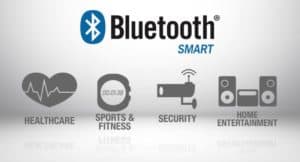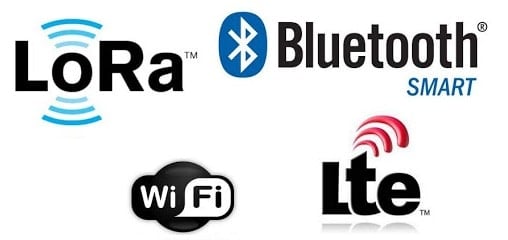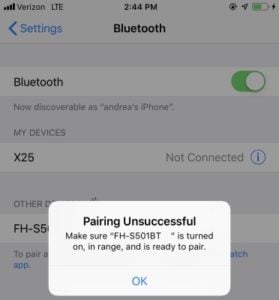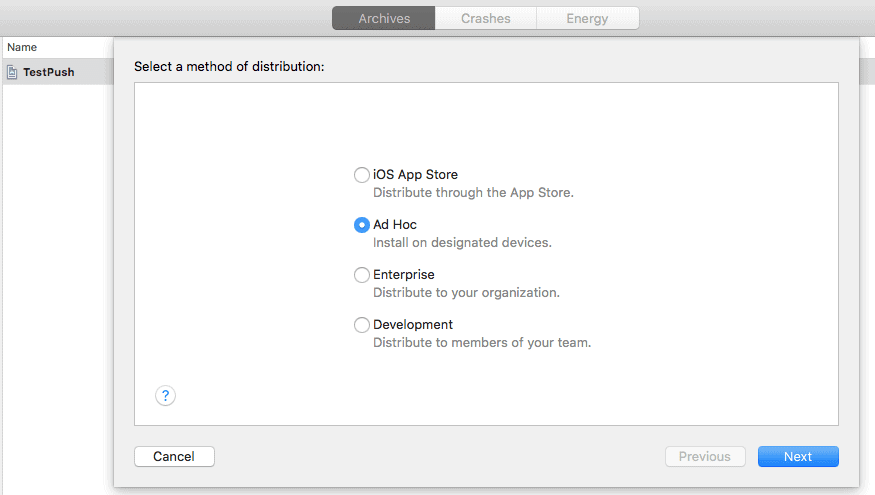I spent three hours trying to reconnect a mobile app to my vacuum cleaner the other day. It took that long because I had to pair the app with the appliance over WiFi instead of Bluetooth Low Energy (BLE).
Imagine if it was a healthcare gadget.
Fortunately, BLE is gradually becoming the golden standard in healthcare, retail, and other industries. So we’re less likely to waste time on something that’s designed to work out of the box.
In this blog, we’ll share tips and tricks on how to create an app with Bluetooth Low Energy. It’s dedicated to people striving to make everybody’s lives easier by leveraging this coming-of-age technology – BLE mobile app development.
Table of contents:
1. What is BLE?
2. Advantages of Bluetooth Low Energy
3. Areas of BLE Technology Application
4. Create an App with Bluetooth Low Energy Technology in 5 Steps
- Step 1: Design considerations
- Step 2: Web app to rule them all
- Step 3: Coding and hardware considerations
- Step 4: Testing like a pro
- Step 5: Deployment
5. Tips on BLE app development
6. Common Challenges in BLE App Development
7. BLE Development Tools and Frameworks
8. Our Experience in Bluetooth LE Application Development
What is BLE?
BLE stands for Bluetooth Low Energy. It’s a wireless radio technology for interconnecting various appliances and allowing devices to communicate and exchange data over radio waves.
If you’ve ever used wireless headphones like AirPods, you’re already familiar with BLE’s bigger brother — Bluetooth. The Low Energy part has to do with optimized performance for longer battery life, meaning BLE devices transfer less data and (typically) operate at a shorter range compared to classic Bluetooth.
In the custom app development world, Bluetooth LE is how a mobile app connects to external peripherals, let’s say, a heart rate monitor or fitness tracker. Besides that, BLE is also how a proximity sensor transmits data to all nearby BLE-enabled applications.
Advantages of Bluetooth Low Energy
Why do businesses choose BLE development at all? Why not WiFi/4G/5G or some other wireless technology? Well, Bluetooth LE is better at close ranges because it’s often faster and cheaper than alternatives.
When you need to exchange large amounts of data with a nearby device, it’s faster to connect with it directly (peer-to-peer), as opposed to setting up other connections requiring a server and more expensive hardware. That’s especially true when you’re controlling a Bluetooth Low Energy device and expect an immediate response when sending and receiving info packets.
Other upsides of the BLE technology include:
- automatic notifications when data on a BLE device changes
- if there’s no data to send, you don’t need to send any data (longer battery life and no low-power mode)
- easy pairing for end-users
Areas of BLE Technology Application
As you’re well aware, data is everything for businesses that want to outpace competitors. And if data coming from Internet of Things (IoT) devices gives you this edge, then Bluetooth Low Energy app development should be your priority.
Related Article: How to Create an IoT App
BLE apps help control all sorts of sensors and IoT devices in various industries. You’ll most likely need such a Bluetooth LE app if you run a business in one of these areas:
- Healthcare
- Retail
- Fitness
- Home automation
- Automotive
So why would you develop a BLE app for healthcare, for example? There are several major use cases to choose from:
Data transfer. That’s the most common use case: imagine you have a glucose meter that patients use at home, and they need an app to read data from this sensor on their mobile phones.
Location tracking. Somewhat of a novelty use case that’s great to impress customers and provide them with an added value of easily navigating inside your clinic.
In this scenario, a BLE app interacts with special trackers (Bluetooth beacons) and can accurately track user location inside buildings.
Audio streaming. A nascent technology (mind you, for Bluetooth app development!), improving audio streaming immensely without compromising the battery life of streaming gadgets and earbuds. Imagine a patient listening to the heartbeat of her newborn and at the same time speaking with their other half (because of the new LC3 codec with support for multi-stream). Or a patient, enjoying all the benefits of the BLE technology using her hearing aid.
You May Also be Interested: How to Develop a Streaming App
Mesh networking. Similar to location tracking use cases, but instead you track medical equipment in real time and have many sensors talking to each other using BLE connectivity. A Bluetooth LE app that controls a mesh networking platform could allow a clinic to optimize its use of lights too.
With that out of the way, let’s proceed to our BLE building guide with specific steps.
Create an App with Bluetooth Low Energy Technology in 5 Steps
If you’ve read any of our app development blogs, you already know the main phases of app development. For those unfamiliar, the drill is hardly a surprise:
- Prototyping & UX/UI design
- Development
- Testing
- Deployment
Still, let’s discuss the small things that characterize BLE application development during each development step.
| Step | Description |
|---|---|
| 1. Design Considerations | Focus on user onboarding, clear connectivity indicators, graceful error handling, and minimal settings to enhance user experience. |
| 2. Web App Integration | Build a web admin portal for managing firmware updates, monitoring device status, and locating BLE equipment, particularly useful for large device fleets. |
| 3. Coding and Hardware Considerations | Choose hardware based on required features, select BLE libraries (e.g., react-native-ble-plx), and implement Bluetooth SIG security recommendations. |
| 4. Testing | Use BLE dongles, simulators (e.g., LightBlue, Nordic nRF Connect), or emulators like BLEmulator for Flutter to test the app in the absence of hardware chips. |
| 5. Deployment | Distribute apps via Apple’s Ad Hoc/Enterprise model for internal use, or simply upload for Android distribution. |
Step 1: Design considerations
Like with any niche mobile app, BLE application design has its peculiarities. What are some of the things you will need to consider when designing a BLE app?
First things first: we need to onboard new users. Since they need to connect the app to an external device, a blitz video instruction would make a lot of sense. Believe me, both your customers and support staff will be happy you did this.
Besides onboarding, you need to remember these things that may aggravate user experience if not addressed:
- Clear indication of what’s happening in the app
Since Bluetooth Low Energy-enabled apps seriously rely on connectivity, the user should always be able to immediately see whether an app is connected or not, whether it’s trying to connect at the moment, or if any user action is required.
- Graceful error handling
In a nutshell, we should only show errors that make sense to the user while trying to figure out everything else, e.g., reconnecting, in the background.
- An explainer screen with instructions when Bluetooth is turned off and the app can no longer operate.
An extra mile would be surfacing a button that brings up the default Bluetooth dialog so users can quickly turn it on.
- Have minimal settings
Dealing with new hardware and software at the same time can be challenging. So making users’ lives easier by removing unnecessary clutter would definitely pay off.
Step 2: Web app to rule them all
While not a hard-set requirement, you can still enhance your BLE-enabled infrastructure by developing a web admin portal. “Wait? To build a BLE app, I need a web app?” That’s right.
This web application will be useful for updating firmware on all your Bluetooth LE gadgets at once, rather than updating just one device at a time. Just in case, the firmware is like a miniature OS running on hardware and controlling its operations. We update it to keep BLE devices secure and fresh with new features (previously postponed for faster time to market).
You may also use the web application to locate the equipment and monitor its status. Of course, building such a web portal is recommended when you need to administer a large fleet of Bluetooth LE devices.
BLE apps benefit from high-quality custom mobile app development to maximize connectivity and performance.
Step 3: Coding and hardware considerations
This step will take the most time and effort. To streamline coding, you’ll need to settle a few things before you create a BLE app.
Decide on the hardware you will be using. Your choice of hardware will guide some of the most critical aspects of BLE app development:
- Will the BLE app support the iPhone’s proximity-sensing capabilities?
- Will you be able to set up a long-range connection (some chips up to 5000 ft)?
- Will you be able to send all required data to another device, given its hardware’s throughput?
These and many other features of your BLE mobile solution will depend exclusively on hardware.
Choose applicable BLE libraries so you don’t have to start from scratch. Some the popular libraries include:
-
- react-native-ble-plx
- react-native-ble-manager
- RxBluetoothKit
The choice will depend on the mobile OS for which you want to make a BLE app. And by the way, Eddystone is no longer relevant because Google is shutting down the project.
Implement security BLE recommendations by the Bluetooth SIG. The Bluetooth Special Interest Group advises to follow these security best practices when you build an app with BLE support:
- Use LE Security Mode 1 Level 4
- Use private resolvable addresses to protect your users’ privacy
- Protect data on a sensor with access, encryption, and authentication permissions
You can glean more from their extensive guide on Bluetooth LE security.
Step 4: Testing like a pro
One of the most challenging BLE app development tasks is testing a BLE application when a hardware chip is not yet ready. In this case, you should use a BLE dongle that connects to a laptop or simulator apps like LightBlue or Nordic nRF Connect.
Otherwise, you’re stuck with manual testing, and only if you happen to build a BLE app on Flutter, there’s an open-source emulator BLEmulator.
Related: The Complete Guide to App User Testing
Step 5: Deployment
What you need to know about delivering your BLE apps to consumers is that if your app is for internal use only, you will need to distribute it using Apple’s Ad Hoc or Enterprise distribution model. That is, you’ll be able to specify connected devices authorized for use with this BLE application.
No shenanigans are necessary in the Android world: you can upload your app to your site or email it straight to employees.
Tips on BLE app development
Let us share some of the BLE application development best practices that we’ve accumulated while working on healthcare BLE apps.
- Scan only until you find the desired device and don’t use looped scanning
- Set up your Bluetooth LE app to ask to be notified when a device has new data
- Scan using filters to find the desired device quicker (by manufacturer ID or profile, e.g., “find all heart rate monitors”)
- Introduce app-layer security to protect the data flowing between two devices and a BLE app
- Setup the optimal size for transferring data to/from a BLE device
Bluetooth LE Android apps
Android BLE app development has its quirks:
- Use Android API level 21 or newer (Android 5.0+)
- Avoid using private APIs (as they will not work on Android 9+)
- Educate users before asking them about Bluetooth permissions
Bluetooth LE iOS apps
Apple takes a more careful approach managing a lot of Bluetooth connectivity stuff on the OS level. Still, there are a few things to keep in mind if you want to create a BLE app for the iPhone.
- as long as you stick with the Core Bluetooth framework, operations queuing will be handled by iOS automatically
- use Core Bluetooth’s background processing and state restoration APIs to make the connection to Bluetooth LE sensors more reliable
- use the iBeacon technology to add (hyperlocal) location awareness to your BLE app
Common Challenges in BLE App Development
BLE app development comes with its fair share of challenges. Understanding and addressing these challenges is crucial to ensure a seamless user experience and efficient functionality. Here are some common challenges that BLE app developers often encounter when creating Bluetooth Low Energy applications:
Intelligible user experience
Providing a comprehensible user experience is essential when working with BLE connectivity. It is important to display the BLE connection status and relevant data clearly, especially when connectivity issues arise. Avoiding default error messages that confuse customers is key.
Developers should focus on creating a user interface that only showcases important information and offers clear instructions on how to resolve issues such as lost connections. Additionally, simplifying the onboarding process using QR codes can help establish connections quickly and effortlessly.
Testing BLE-enabled mobile apps
Thorough testing is essential for BLE-enabled apps due to the need to handle multiple edge cases. These cases may include:
- changing the range between a device and a smartphone
- checking for data interruption
- sudden loss of connection
- resetting iOS/Android permissions
- handling conflicting connections
- dealing with garbage data and assessing power consumption
Rigorous testing ensures that the app functions reliably across various scenarios. Of course, you’ll be always limited by hardware, but if there’s an option to implement Bluetooth 5.0 protocols over Bluetooth 4.0, you should always pick the most recent version.
With more recent Bluetooth versions, you get a faster data rate and a longer battery life (especially when exchaning small amounts of data). Remember that BLE, sometimes referred to as Bluetooth 4.0 or Bluetooth Smart, becomes available from version 4 and higher.
BLE app security
Security is a critical aspect of Bluetooth low energy development. With Bluetooth 4.2 and higher (unlike Bluetooth classic), LE Secure Connections provide enhanced security measures, making it extremely difficult for malicious actors to intercept or sniff data in transit. Implementing proper security protocols is essential to protect sensitive information exchanged between devices.
Firmware updates
The hardware devices that BLE apps connect to may require firmware updates to enhance functionality or address vulnerabilities. It is important to provide customers with a simple and seamless method to update the firmware of their devices. Cumbersome processes, such as having to set up the connection and the app from scratch for each firmware update, can frustrate users. Ensuring a smooth firmware update process enhances the user experience.
Mobile OS specifics
When developing BLE apps, it is vital to consider the specific behaviors and limitations of different mobile operating systems. For instance, in iOS, users cannot “forget” a Bluetooth device from the app itself and must manually do so through the iOS settings. On the other hand, Android does not pose the same limitation. Adapting the app’s functionality to align with the specific requirements and capabilities of each operating system ensures a consistent experience for users. So make sure your BLE app development company is familiar with these iOS and Android peculiarities, including generic attribute profile (GATT).
BLE Development Tools and Frameworks
When developing BLE mobile applications, utilizing the right development tools and frameworks can greatly streamline the development process. Here are some popular options for implementing Bluetooth technology.
Bluetooth Developer Studio
This comprehensive tool, provided by Bluetooth SIG, offers a visual interface for designing and prototyping BLE applications. It simplifies the creation of custom profiles, services, and characteristics.
Nordic nRF Connect
Nordic Semiconductor’s nRF Connect is a versatile tool that allows developers to explore and test BLE devices. It provides a range of functionalities, including device scanning, service discovery, and data inspection.
Core Bluetooth Framework (iOS)
For iOS app development, the Core Bluetooth framework provides a robust set of APIs to interact with BLE devices. It enables developers to discover, connect to, and exchange data with Bluetooth peripherals seamlessly.
Android Bluetooth APIs
Android’s Bluetooth APIs offer developers a rich set of tools for BLE app development. These APIs provide functions for scanning, connecting to, and exchanging data with BLE devices, empowering developers to create feature-rich Android apps.
Choosing the appropriate development tools and frameworks ensures efficient development, smoother integration with BLE devices, and ultimately, a superior user experience for your BLE mobile app.
Our Experience in Bluetooth LE Application Development
We’ve built over a dozen of applications connected to BLE-enabled devices, most of them for healthcare providers to help them:
run medical research:
- iFaint, a remote patient monitoring app for the Stanford University School of Medicine
operate healthcare sensors:
- Joov, IoT app for the official light therapy partner of the SF 49ers since the 2019 NFL season.
enhance remote patient monitoring experiences:
- remote patient monitoring app for Tula Health, leveraging data from glucometers
Other examples of BLE apps we built help people count steps and control home appliances.
One of the recent projects where our BLE app experts had a chance to chew over BLE implementation was a light-therapy app. We had to maintain compatibility with the client’s legacy light-therapy devices while adding support for their latest hardware.
Ultimately, we had to recover the BLE commands from a legacy codebase and apply them in a clean new code. As a result, the app began to support new hardware with more features, using the full potential of BLE connectivity while preserving support for older devices.
If you have any questions about BLE application development or want to learn more about our BLE app development services, schedule a meeting, and one of our app wizards will guide you through all the intricacies.
[This blog was originally posted in Feb 2021 and most recently updated in May, 2023]
Frequently Asked Questions
How much data can you transfer over a BLE network?
Up to 2 Mbps, but it depends on the hardware. The actual chunk of data will be smaller because of the overhead meta-data necessary for the Bluetooth protocol. In practice, most sensors operate under the 512-byte threshold.
Do I need to check if my BLE device ships with some SDK or API to pair it successfully with my application? Or what do I need?
You just need to check if the device is following Bluetooth specifications and what version.
What is the real range for BLE?
Most recently up to 5000 ft. in direct line-of-sight scenarios. However, more ubiquitous use cases vary from 3 to 33 ft.
Do cross-platform apps (for example, ones developed with React Native) work with BLE?
Yes, there are even ready libraries available to help you make a BLE app faster.
Does the user need to connect with in-store beacons before interacting with them?
No, and many users can receive info from the same beacon simultaneously.
Can a BLE device connect to more than one phone at the same time?
No. If a phone (with a corresponding BLE app installed) is used to control the device, the latter can interact only with one mobile phone (app) at a time. It’s different from BLE beacons because beacons transmit data available for all phones (applications) in the vicinity. At the same time, a Bluetooth LE app can connect to many peripheral devices simultaneously.
Is iOS BLE app development simpler than making Android BLE apps?
To some extent, yes. But with Android, you get more flexibility.







